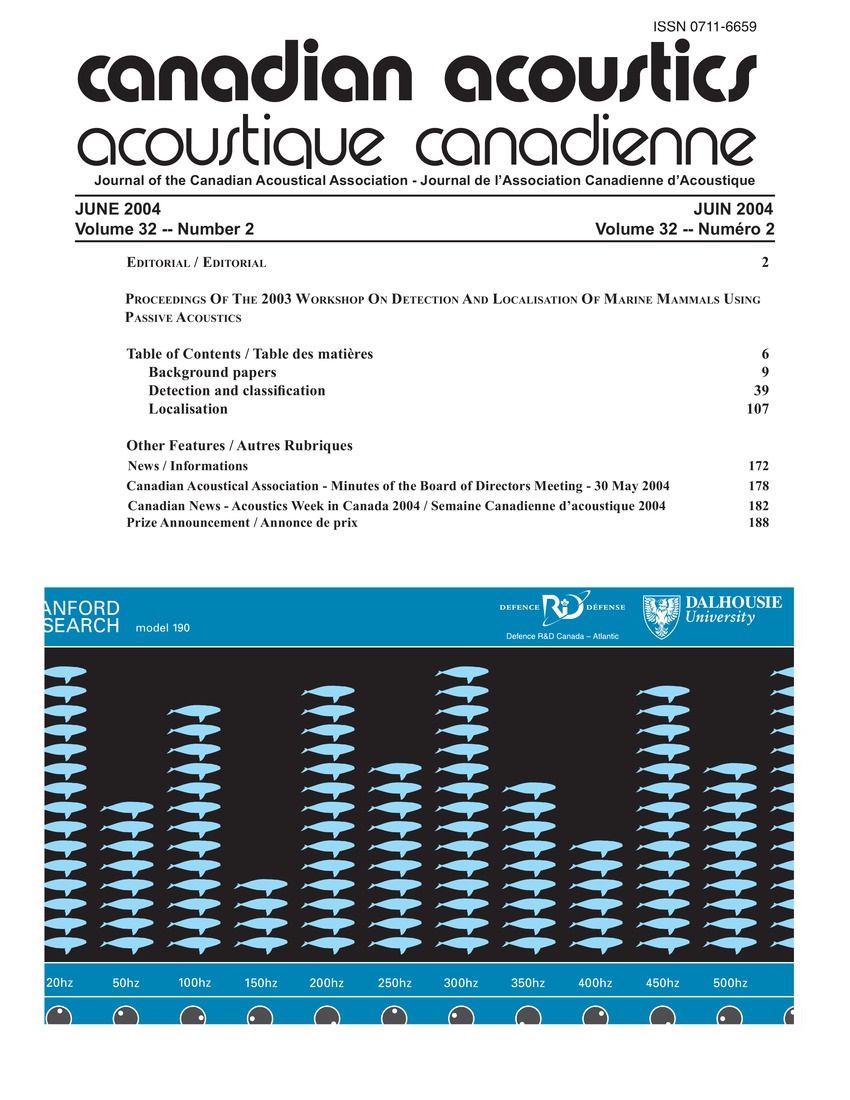The real-time detection of the calls of cetacean species
Keywords:
Algorithms, Computer software, Environmental protection, Fish detectors, Hydrophones, Marine biology, Parameter estimation, Real time systems, Sonar, Surface roughness, Cetacean species, Echolocation, Marine Mammal Automated Detection System (MMADS), Real time detectionAbstract
The UK is currently implementing the next generation of military surface ships active sonars. As part of the environmental protection work associated with the new sonars, and also in support of existing sonars, the UK Ministry of Defence has funded a programme of work to improve the capability to detect, classify and localise marine mammals. QinetiQ Ltd have been contracted to provide a software package, which can process the raw acoustic data from a number of sonar systems, including towed arrays, hull-mounted arrays and sonobuoys. The software needs to be able to adjust to the local environment and provide a cetacean presence/non-presence decision in real-time and with a very low false alarm rate. The first version, running on a standard PC, has now been completed and tested at sea during the NATO SIRENA 03 cruise. This paper describes the processing method employed and the results achieved during testing using a number of datasets.Additional Files
Published
How to Cite
Issue
Section
License
Author Licensing Addendum
This Licensing Addendum ("Addendum") is entered into between the undersigned Author(s) and Canadian Acoustics journal published by the Canadian Acoustical Association (hereinafter referred to as the "Publisher"). The Author(s) and the Publisher agree as follows:
-
Retained Rights: The Author(s) retain(s) the following rights:
- The right to reproduce, distribute, and publicly display the Work on the Author's personal website or the website of the Author's institution.
- The right to use the Work in the Author's teaching activities and presentations.
- The right to include the Work in a compilation for the Author's personal use, not for sale.
-
Grant of License: The Author(s) grant(s) to the Publisher a worldwide exclusive license to publish, reproduce, distribute, and display the Work in Canadian Acoustics and any other formats and media deemed appropriate by the Publisher.
-
Attribution: The Publisher agrees to include proper attribution to the Author(s) in all publications and reproductions of the Work.
-
No Conflict: This Addendum is intended to be in harmony with, and not in conflict with, the terms and conditions of the original agreement entered into between the Author(s) and the Publisher.
-
Copyright Clause: Copyright on articles is held by the Author(s). The corresponding Author has the right to grant on behalf of all Authors and does grant on behalf of all Authors, a worldwide exclusive license to the Publisher and its licensees in perpetuity, in all forms, formats, and media (whether known now or created in the future), including but not limited to the rights to publish, reproduce, distribute, display, store, translate, create adaptations, reprints, include within collections, and create summaries, extracts, and/or abstracts of the Contribution.


